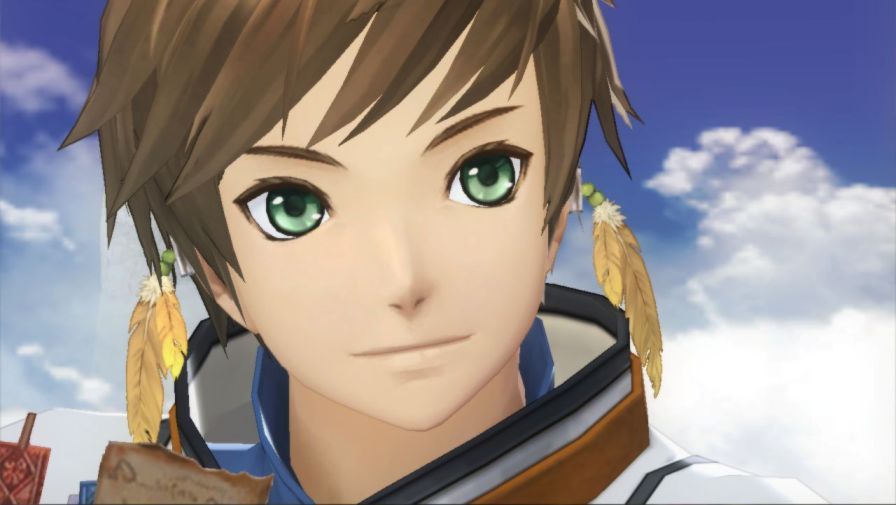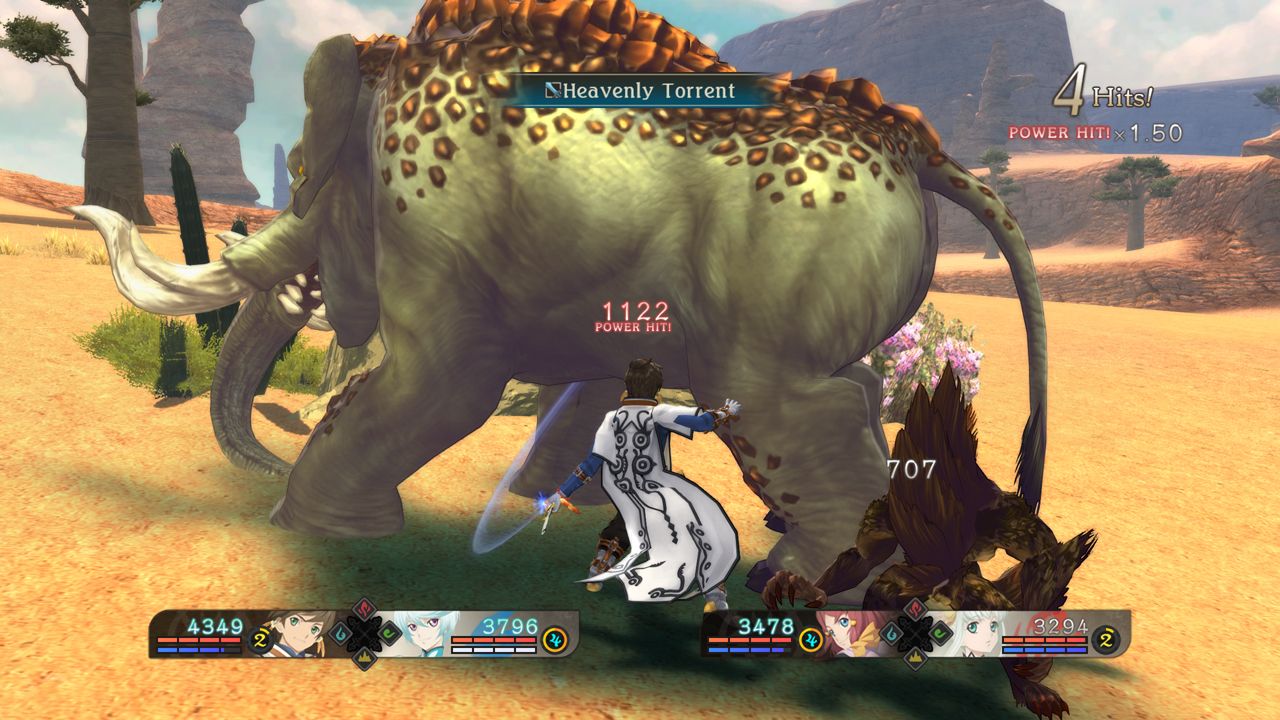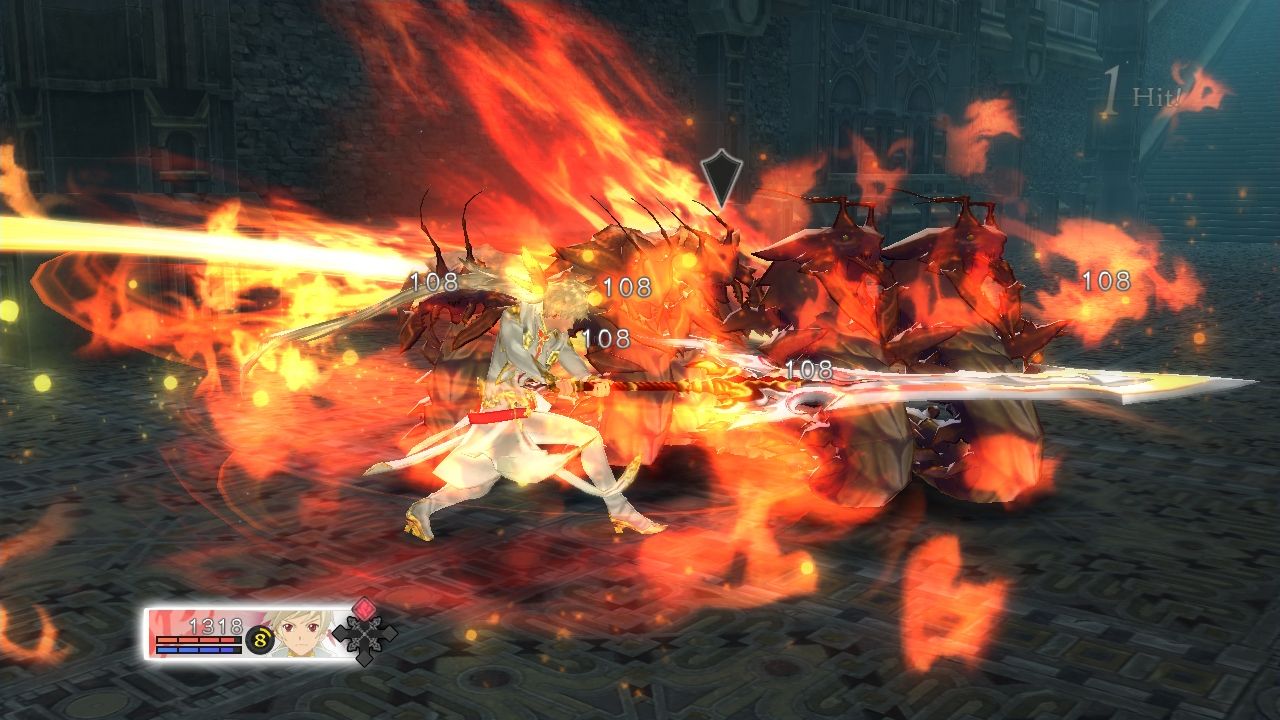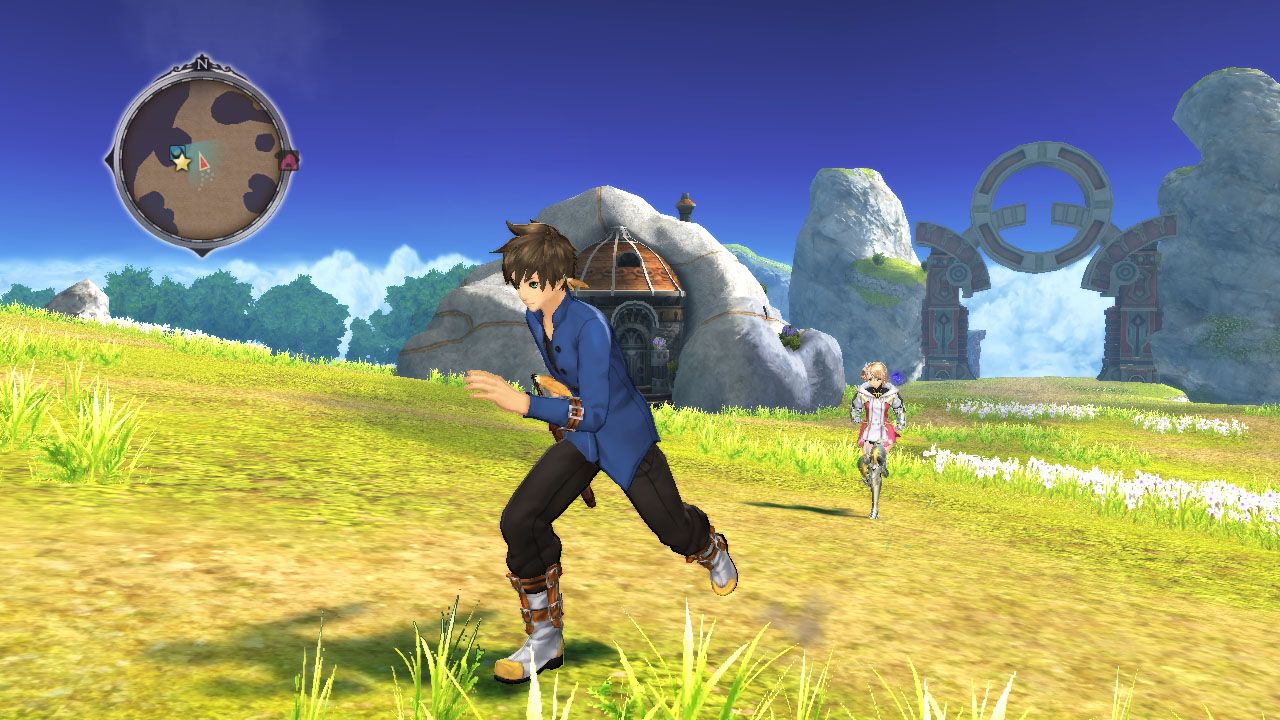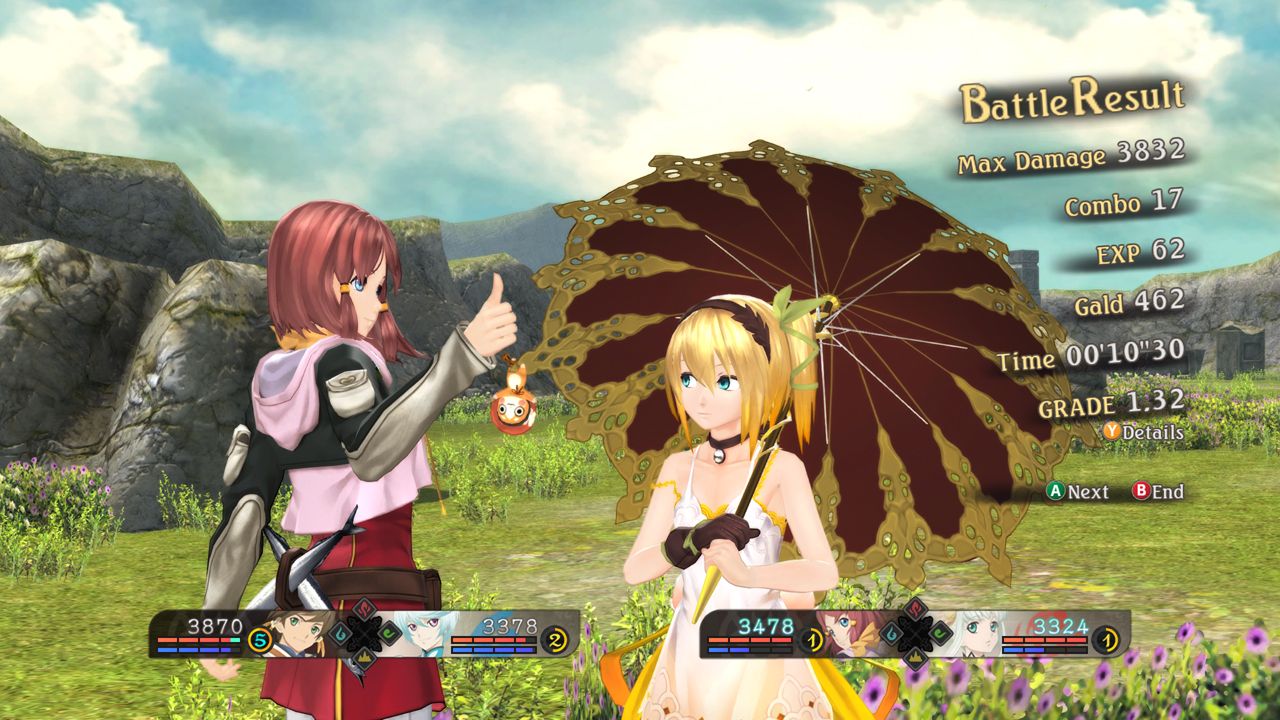The latest title in the long-running Tales of franchise, Tales of Zestiria, made its appearance at this year's New York Comic Con. Naturally I had to experience the updated combat system and see the expansive open world for myself, especially considering the bevy of details released at NYCC 2014.
Playing as the protagonist Sorey, you are accompanied by his best friend Mikleo as they attend a festival in the kingdom of Glenwood. However, as things tend to do in JRPGs during these elaborate celebrations, everything goes to hell as the angered townspeople transform into Hellions and attack.
Sorey decides to become a Shepard and ally himself with the Seraphim in order to combat these threats, which kickstarts the main plot of the game.
Combat retains the distinctive "Linear Motion Battle System" of the Tales of games, including the more recent titles that debuted the free-range motion system (Zestiria's variant on this is called "Fusionic Chain LMBS").
Artes, or a character's special skills, are of course featured and can be chained together to form powerful combos, especially combined with enemy juggling.
There are some important changes to the battle system, however, that serve to add a breath of fresh air. The Fusionic Chain LMBS mentioned above includes the new Spirit Chains (SC) bars. Spells and techniques use a certain amount of the Spirit Chain gauge when executed.
Conserving your SC bars and recovering depleted ones by taking evasive action helps to speed up SC recovery. However, a low SC also means that party members will deal more damage so learning when to conserve and when to go all out is key.
A major mechanic promoted with Tales of Zestiria is the near-seamless transitions into battle, meaning the environments load much faster than before. This may sound strange but the almost non-existent transition can actually trick one into thinking battles are taking place in the same traveling environment.
Lending to this brief suspension of disbelief is the fact that topography in the combat environment is based exactly off the section of travel environment the hero happens to be in when initiating a fight, right down to any rock formations, ponds and the relative size of the area.
Another new feature of the game, although not in the preview build I played, allows for characters Sorey and Rosé to perform "Armitization," which lets them fuse with a Seraphim to form a powerful hybrid mode.
Zestiria's open world is the first of the series -- while other titles allowed for some exploration, this game has a much more expansive world that can be extensively explored at you leisure.
A little extra feature that further encourages exploration is the "Points of Interest" system, which rewards players with extra SP for discovering landmarks, similar to the experience points reward system found in Xenoblade Chronicles.
The environment details and setting -- which see a return to the traditional Western fantasy setting -- are vibrant, colorful and have a lovely variety, whether it be luscious green plains or dank and dark dungeons.
There's also the night and day changes that include dynamic lighting reflecting the time of day. To top it off there are even lovely weather effects such as rain that occur in cycles.
Character designs are also varied thanks to the collaboration between the four character designers of the series. The very different artstyles meld incredibly well together in game so characters look uniform regardless of who designed them.
The story certainly wasn't bad from what I played but it didn't have the same hook and magic of previous titles. I will admit that I did enjoy the characters and their interactions, which makes the plot much more bearable.
There were some disappointing hang-ups I encountered, however. The first is oddly stiffer feel of movement control during combat, a non-issue in other recent Tales of games.
This, coupled with weird stutters and frame drops when I'm actually fighting, make sorties a bit awkward to play through until you've adjusted to the quirks. It's quite the head-scratcher considering how smooth and fluid the older Tales of Vesperia plays during combat.
Another issue is the visuals. Although they are vibrant and eye-catching, it doesn't compare to the far better rendered and way less pixelated older titles of the series. Not to mention the distracting and frequent instances of pop-in.
Zestiria is supposed to be a loving tribute to the 20th anniversary of a long-running and much beloved JRPG series with new gameplay and visual mechanics to help spice up the title (the much coveted choice between Japanese and English audio doesn't hurt things either).
But unfortunately it feels lacking. Not a bad game by any stretch of the imagination but not the polished and exceptional JRPG fans would come to expect from Bandai Namco.
A let down considering that Tales of Zestiria should celebrate the heritage of the franchise, not fade quickly into the background as simply decent.

